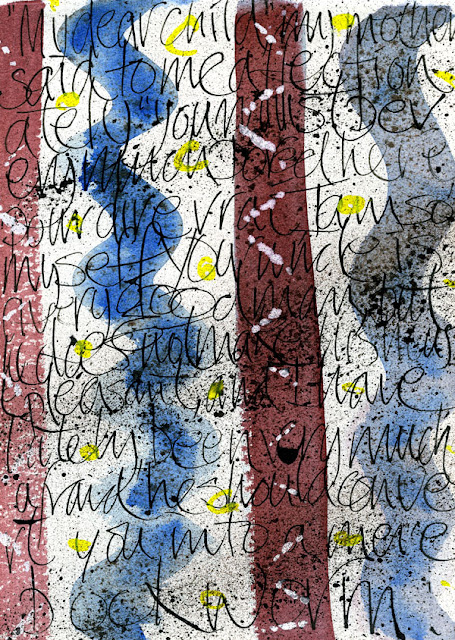 |
| Looking west over Grasmere, water colour landscape by David Esslemont |
Building your profile
Standing out from or above the crowd is a challenge, to do so online is an even greater challenge, as the crowd is measured in thousands if not millions.
Your customers need to be able to find you and your art online. They do this in a number of ways: by going
directly to your Web site, online gallery, blog or whatever,
following a link, or
searching for you or related subjects. Web site analytics will reveal where direct traffic and referrals are coming from, and what keywords are used when searching. Use your URLs everywhere, and link them. Add them to your e-mail signatures and use your domain's e-mail service e.g. contact
david@solmentes.com and people will know where to find you and your work. Ask for reciprocal links with other Web sites, comment on posts, submit your URL's to the search engines directly.
Searching
“What are your customers searching for” begs the question “what are they looking for?” Are they looking for information or advice, or to buy art. I would further ask the question “why?” Addressing this latter question first: perhaps they are looking for a memento, a gift or they simply collect paintings or prints. Perhaps they are looking for a picture to hang in their hallway. Perhaps they are just curious to know more about you and your work. Perhaps they are looking for advice on how to frame a picture, or how to choose a picture for their home. The field is wide and if one is aiming to be in “the right place at the right time” you have to offer the online visitor what they are looking for and, something of value. Artist Lynne Taetzsch provides an excellent example both on her
Web site and on her
blog.
The chances are their search will include the criteria that will help them find what they are looking for: keywords. So naturally having matching keywords is a big advantage. Relevant keywords as header tags, image tags, link references, titles and body text will help your ratings with the search engines. My advice: work on this now or get someone well versed in SEO (search engine optimization) to do the job, it is important.
Keywords
Let us assume I
paint watercolour landscapes of the
English Lake District. I would expect all the bold words to be important keywords and ensure their inclusion together with place names, and qualifiers such as morning, evening, dusk, rain, cloud, and lake. If you are selling original framed art and prints, then include those keywords too, if you think it will look good on a wall, in a living room or elsewhere, say so. Keywords can be generated from a text (or Web site) by analyzing the frequency of words used [much as I did with
Barack Obama's inaugural address] to find the most often used, or
key words. There are many free online keyword generators such as
Tocloud that will also produce graphic images, but none that will produce anything quite like
I did for the President's speech:
 |
| Drawing by David Esslemont from My Fellow Citizens |
Searching Google for “Grasmere watercolour” returns 105,000 results with this link on the first page
:
"www.solmentes.com/davidesslemont/wrs.04.html
You +1'd this publicly.
Undo
Searching Google Images returns 8,000+ results but fortunately shows my Solmentes logo on the first page! This links to a
Facebook post about the Grasmere watercolour being available as a stretched canvas print. The actual water colour image is nine pages further down and links to my
online gallery. The image itself is tagged with the title "Looking west over Grasmere, watercolour as stretched canvas print!"
Good luck.






































